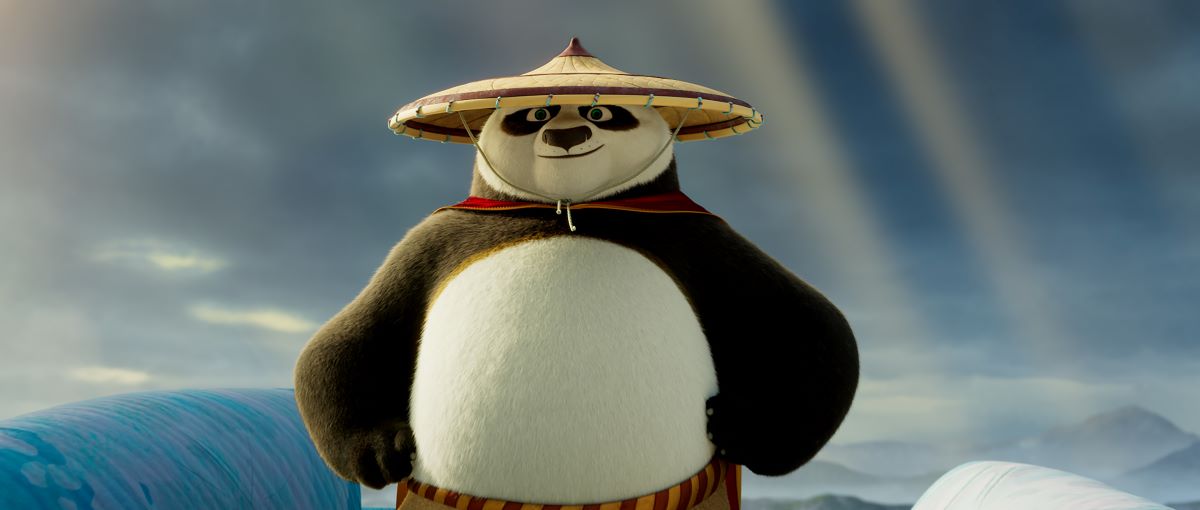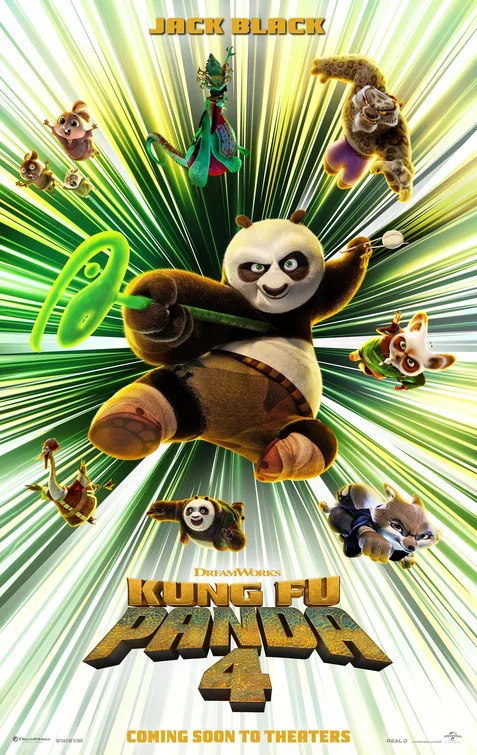Did the world really need another “Kung Fu Panda” movie?
The trilogy ended in satisfying fashion in 2016 with the cuddly, constantly hungry Po finally coming into his own in his unlikely role as the Dragon Warrior. He is both the student and the teacher. He has the respect of the Furious Five and his mentor, Master Shifu. He’s proven his bravery again and again in protecting the Valley of Peace from all manner of animal attackers. And he enjoys a loving and supportive bond with both of his dads: the restaurateur goose Mr. Ping and his biological panda father, Li. It’s all good.
Eight years later, “Kung Fu Panda 4” struggles to justify its existence. It lacks both the delicate artistry and warm wit of its predecessors. The subtle sense of spirituality is long gone; in its place are frantic action sequences. Whereas the previous movies operated on various levels to resonate with adults and entertain kids, this one is geared mainly toward younger audiences in ways that are frequently silly and insubstantial.
Too often in the film from director Mike Mitchell (“Trolls,” “The LEGO Movie 2: The Second Part”) and co-director Stephanie Ma Stine, the pacing is rushed, squandering the potential for tension or humor. A sight gag involving a literal bull in a China shop is a prime example: It zips by during a chase scene, without allowing us a moment to linger in the details.
But in addition to a litany of uninspired puns, the main problem in the script from returning writers Jonathan Aibel & Glenn Berger and Darren Lemke (“Turbo,” “Shazam!”) is that the event that sets the plot in motion feels contrived. Shifu (Dustin Hoffman) tells Po (the ever-energetic Jack Black) that he must take over as spiritual leader of the valley—which had been the late, legendary Master Oogway’s responsibility—and hand off the day-in, day-out Dragon Warrior duties to a protege. Why now? He’s only had the gig for a little while, and a hastily called audition montage barely registers.
Besides, there’s a more pressing threat, and it introduces us to a bunch of new characters voiced by an impressive array of actors. A shape-shifting sorceress known as the Chameleon (Viola Davis, formidable as always) wants to steal Po’s Staff of Wisdom and use it to gather up the abilities of all the villains in the Spirit Realm. Yes, this does sound a lot like the dastardly intention of Kai, the supernatural bad guy voiced by J.K. Simmons in “Kung Fu Panda 3.” To stop the Chameleon, Po reluctantly enlists the help of Zhen, a thieving fox who’s knowledgeable about the outside world in ways that he isn’t. She’s voiced by Awkwafina in yet another wise-cracking sidekick role. It’s a strength of hers and it can be amusing, but by now we’ve seen her play this kind of smart-alecky comic part way too many times, particularly in animated films, between “The Little Mermaid,” “The Bad Guys” and “Raya and the Last Dragon.”
As Po and Zhen travel to stop the Chameleon in a bustling metropolis known as Juniper City—a place that’s crammed with narrow streets and crowded markets but isn’t rendered in a particularly imaginative way—Po’s two dads furtively follow him. Their B-plot feels like an afterthought, as the deeply likable Bryan Cranston and James Hong’s characters get little more to do than waddle and worry. The big city is also where we meet Han, leader of the street thieves, a Sunda pangolin voiced by a welcome but underused Ke Huy Quan. The muchness of it all grows tiresome – but at the same time, if you’re looking for the Furious Five from the previous films, we’re told that those essential characters are off on solo missions. This makes no sense because the whole point of the team of Tigress, Crane, Viper, Mantis and Monkey is that they work together—that their individual abilities are magnified when they collaborate.
Then again, so much of what makes the “Kung Fu Panda” movies magical is missing here, particularly the crucial notion of inner peace. The earlier films gave us time to take a breath, settle in and luxuriate in the colors and textures of varied and detailed animation sequences. These visual departures, often in flashback form, were crucial not only to the storytelling but also to the overall spiritual vibe, which makes this series so distinctive. This time, you get a chaotic chase scene to a cover of Ozzy Osbourne’s “Crazy Train,” which is perhaps all-too fitting given that this franchise has gone off the rails.




















